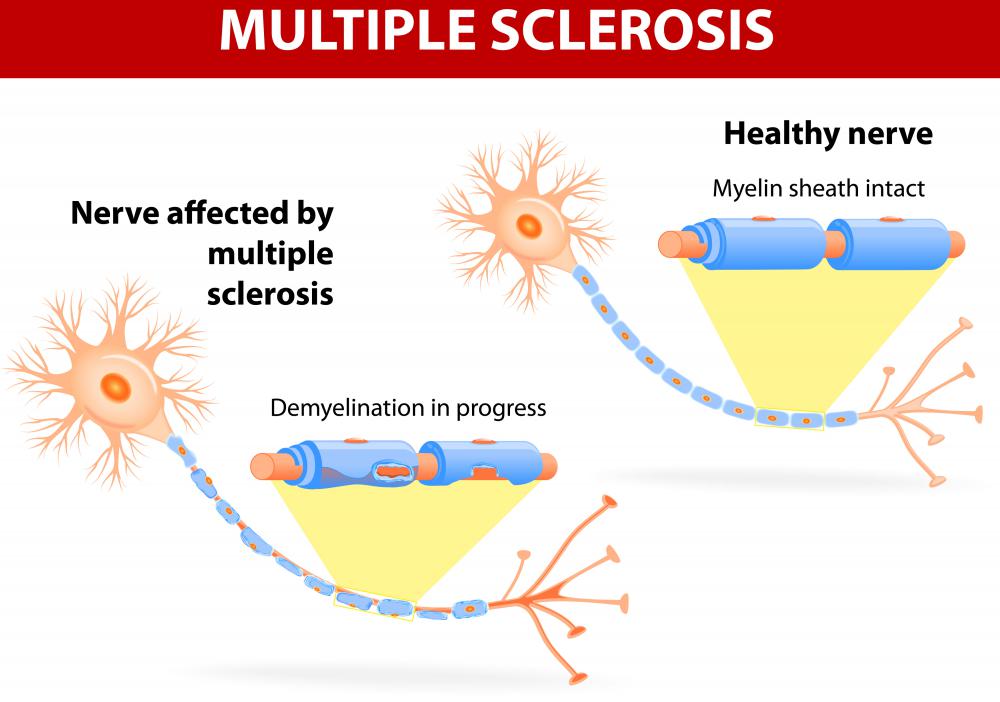At TheHealthBoard, we're committed to delivering accurate, trustworthy information. Our expert-authored content is rigorously fact-checked and sourced from credible authorities. Discover how we uphold the highest standards in providing you with reliable knowledge.
What are the Most Common Causes of Gait Disturbance?
Gait disturbance is commonly caused by an injury to the spine or legs or by a disease such as multiple sclerosis or Parkinson's. Alcohol abuse is another common cause of gait disturbance, as is abuse or use of certain drugs and medications. There are several types of gait problems, which vary depending on the cause of the disturbance.
An ataxic gait disturbance occurs when a person has had damage to her cerebellum. Someone with an ataxic gait will have trouble maintaining her balance while walking. A common cause of an ataxic gait is multiple sclerosis, an autoimmune disease. When someone has multiple sclerosis, the immune system attacks the fatty coating that protects the spinal cord and brain.

Damage to the cerebellum that results in ataxia can also occur when a person undergoes a severe head trauma, such as during a car accident or when someone suffers a stroke. Use of medications to prevent seizures can also cause ataxia, as can abuse of alcohol. Someone with ataxia may need to use a walker or cane to steady himself and may benefit from physical therapy.

Parkinson's disease is another common cause of gait disturbance. The disease can cause a person to have a propulsive gait, meaning she walks with her shoulders drooping forward and her head bent. She may shuffle as she walks. In some cases, movement for patients with Parkinson's is extremely difficult. A patient may feel as though her feet are sticking to the floor. As the disease progresses, a person may lose her balance when walking and fall.

Other common causes of gait disturbance include injuries or ailments that are easily repaired. A person who has a plantar wart or a callus on his foot may have gait problems until the wart or callus is removed. Poorly fitting shoes can also disrupt a person's walk. If a person has twisted his ankle, suffers from shin splints, or has broken a bone in his leg or foot, he will most likely have gait disturbance until the injury heals. Usually, a person will use crutches until healed.

Congenital conditions, such as a dislocated hip joint, commonly known as developmental dysplasia, usually cause gait disturbance as well. When a child is born with developmental dysplasia, one leg may end up being shorter than the other, which can cause her to walk with a limp or to waddle as she walks. If caught early enough, the dislocated hip can be repaired with a brace. In some cases, surgery may be needed to adjust the hip.
AS FEATURED ON:
AS FEATURED ON:


















Discuss this Article
Post your comments